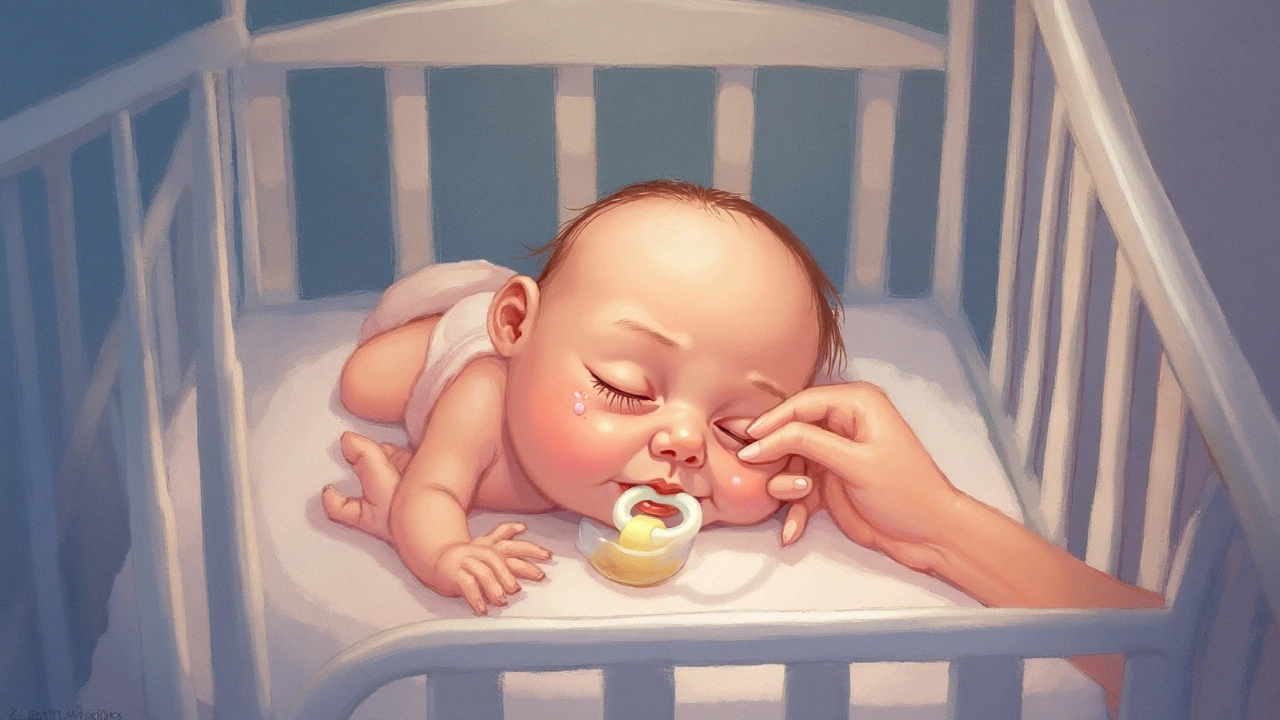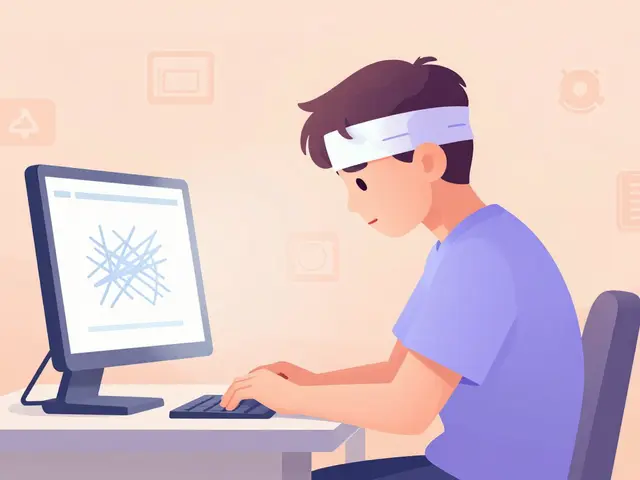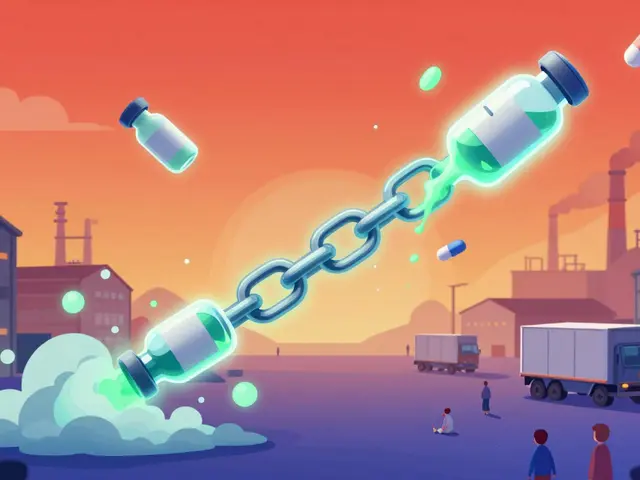Teething Pain is a common source of discomfort in infants as their first teeth break through the gums. When that ache hits at night, the result is often a restless sleeper, frequent waking, and cranky mornings. Parents who’ve survived a few nights of endless crying know the feeling: the whole house feels louder, the clock reads 2am, and you’re left wondering if it’s just a growth spurt or something more. This guide untangles the connection between teething pain and disrupted sleep, gives you clear signs to watch for, and equips you with tried‑and‑tested relief strategies.
What Is Teething Pain?
Teething begins roughly between 4 and 7 months, though some babies start earlier and others later. The process involves the tooth’s root pressing against the soft gum tissue, causing inflammation, swelling, and a sharp or throbbing ache. The pain intensity varies; for some, it’s a mild nuisance, while for others it’s enough to interrupt a full night of sleep.
How Teething Pain Affects Baby Sleep Patterns
Sleep in infants follows a predictable architecture of light (stage1) and deep (stage2) phases, punctuated by brief REM bursts. Baby Sleep Patterns refer to the regular cycles of sleep and wakefulness that infants establish during the first year are fragile. When the gums become inflamed, the brain receives pain signals that can shift a baby from deep sleep to a lighter stage, making them more prone to waking at the slightest discomfort.
Research from the Pediatrics Journal (2022) shows that 68% of parents notice an increase in night‑time awakenings during a teething episode lasting 3‑5 days. The same study links the rise in awakenings to the release of cortisol, a stress hormone that interferes with the body’s natural melatonin surge.
Recognizing Sleep Regression Linked to Teething
Sleep regression is a temporary setback where a baby who has been sleeping well suddenly starts to wake more often. While many factors can trigger a regression-growth spurts, illness, or developmental milestones-Sleep Regression is a short‑term disturbance in an infant’s established sleep routine caused by teething has a few tell‑tale signs:
- Increased fussiness right before bedtime.
- Rubbing or biting at the gums, especially after a feed.
- Night wakings that occur within 30 minutes of falling asleep.
- Reduced appetite or preference for cooler liquids.
If these symptoms line up with the typical 4‑ to 7‑month window, teething is likely the culprit.
Managing Discomfort: Non‑Pharmacologic vs Pharmacologic Options
There are two broad camps of relief methods. Non‑pharmacologic techniques focus on soothing the gum without medication, while pharmacologic relief involves approved pain‑relieving agents. Below is a quick side‑by‑side look.
| Method | How It Works | Typical Onset | Safety Rating (1‑5) |
|---|---|---|---|
| Cold Teething Ring | Cold numbs the gum, reducing inflammation | Minutes | 5 |
| Gum Massage | Gentle pressure increases blood flow, easing pressure | Immediate | 5 |
| Acetaminophen (Infant dose) | Blocks pain signals in the brain | 30‑45min | 4 (when dosed correctly) |
| Ibuprofen (Infant dose) | Reduces inflammation and pain | 30‑45min | 4 (avoid if fever > 38.5°C) |
Non‑pharmacologic relief is safe for any age and can be combined with short courses of medication if the pain seems severe. Always follow the dosing guidelines on the label or your pediatrician’s advice.

Creating a Sleep‑Friendly Environment During Teething
Beyond direct pain relief, tweaking the sleep environment can make a big difference. Consider these adjustments:
- Cool the room: A slightly cooler room (around 18‑20°C) can lessen swelling.
- White‑noise machines: Consistent low‑level sound masks the sudden cries that often wake a baby.
- Elevated head position: A slight incline (using a safe wedge) can reduce reflux, which sometimes worsens with teething.
- Consistent bedtime routine: A predictable sequence-bath, massage, story-signals the brain that it’s time to wind down, even if the gums hurt.
These tweaks work hand‑in‑hand with pain‑relief methods, helping the baby transition back into deeper sleep cycles faster.
When to Call a Pediatrician provides medical guidance for infants, especially when symptoms exceed typical teething discomfort
Most teething episodes are harmless, but there are red flags that merit professional evaluation:
- Fever above 38.5°C that lasts more than 24hours.
- Persistent diarrhea or vomiting.
- Unusual swelling or a white patch on the gums.
- Sudden loss of appetite lasting several days.
If any of these appear, schedule a check‑up. Sometimes a concurrent ear infection or cold can masquerade as teething, and a pediatrician can rule out other causes.
Related Topics to Explore
Understanding teething pain opens the door to a host of related subjects that can further improve your infant’s wellbeing:
- Gum Inflammation is the swelling of the gingival tissue that occurs during tooth eruption, its signs, and treatment.
- Circadian Rhythm refers to the internal body clock that regulates sleep‑wake cycles in infants and how teething can temporarily shift it.
- Sleep Training covers techniques that help babies learn to self‑soothe and fall asleep independently, especially useful after a teething episode.
- Infant Melatonin is a hormone that signals the body to prepare for sleep, often lower in babies coping with pain.
Each of these topics builds a more holistic picture of why a little gum ache can feel like a big sleep monster.
Frequently Asked Questions
How long does teething pain usually affect sleep?
Most babies experience heightened night‑time waking for 3‑5 days per tooth. The worst usually occurs when the tooth is about to emerge, then symptoms fade quickly.
Is it safe to give my baby ibuprofen for teething?
Ibuprofen is safe for infants over 6months when given at the correct dose (usually 10mg/kg). Always double‑check the label or ask your pediatrician, especially if your baby has a fever or is dehydrated.
Can I use a frozen washcloth on my baby’s gums?
Yes, a clean, damp washcloth chilled in the fridge (not the freezer) can provide gentle numbing. Make sure it’s not too hard, and supervise to avoid choking.
Should I keep my baby awake longer to reset their sleep schedule?
No. Forcing extra wakefulness can increase stress hormones and worsen pain perception. Focus on soothing and a consistent routine instead.
When is it appropriate to switch from non‑pharmacologic to medication?
If your baby cries continuously for more than 15‑20 minutes despite cold rings or gum massage, a single dose of infant acetaminophen can break the cycle. If symptoms persist, consult your pediatrician.
Does breastfeeding help with teething discomfort?
Breast milk contains natural soothing compounds and can calm a crying baby, but it won’t directly numb gum pain. Use it alongside other comfort measures.
Can teething cause a fever?
A mild temperature (under 38°C) can accompany teething. Anything higher should be evaluated for infection or other illness.




Jonathan S on 25 September 2025, AT 15:48 PM
We must acknowledge that the relentless cries at 2 am are not merely a parental inconvenience but a societal failing that tolerates needless suffering. 🌙 The infant’s gums are inflamed, sending pain signals that violently disrupt the delicate architecture of sleep cycles. It is a moral imperative to arm ourselves with evidence‑based relief strategies rather than resorting to mythic “just wait it out” advice. The literature from the Pediatrics Journal makes it crystal clear that cortisol spikes are a biochemical consequence we can mitigate. By employing cold teething rings and gentle gum massage, we afford the child a brief reprieve that honors their dignity. Moreover, when the pain persists, judicious use of infant‑appropriate acetaminophen is not a betrayal but a compassionate intervention. Ignoring the baby’s distress forces the family into a prolonged state of chronic stress, which can have downstream effects on the parents’ mental health. 🌿 Each night of fragmented sleep compounds the risk of postpartum depression, a reality that should shake our complacency. We owe it to our community to disseminate these practices widely, ensuring every caregiver feels equipped. The recommendation to keep the bedroom temperature between 18‑20 °C may seem trivial, yet it reduces swelling and promotes better rest. White‑noise machines create an auditory blanket that muffles sudden wails, preventing a cascade of awakenings. Elevating the head slightly can also alleviate reflux, a common co‑conspirator with teething discomfort. Consistency in bedtime rituals signals the brain that soothing is underway, even if the gums protest. This harmony between environmental tweaks and pain control fosters a return to deep sleep phases. Parents, let us not shy away from these simple, humane measures; let us champion a night where the only sound is a gentle lullaby, not a cry for relief. 😊